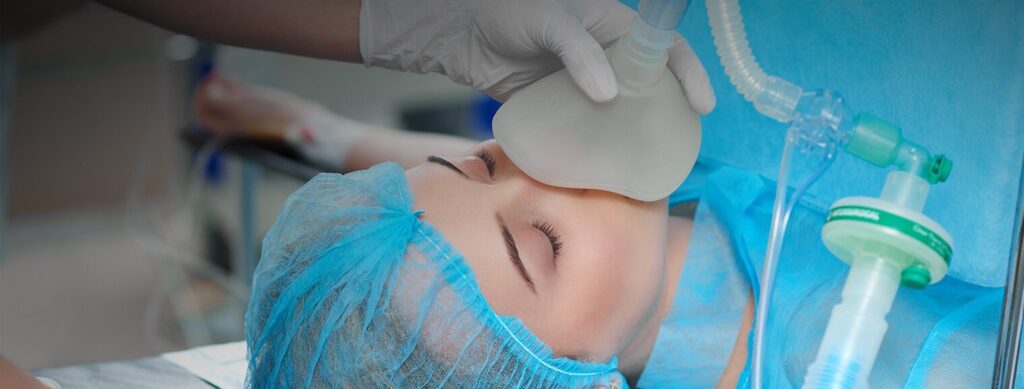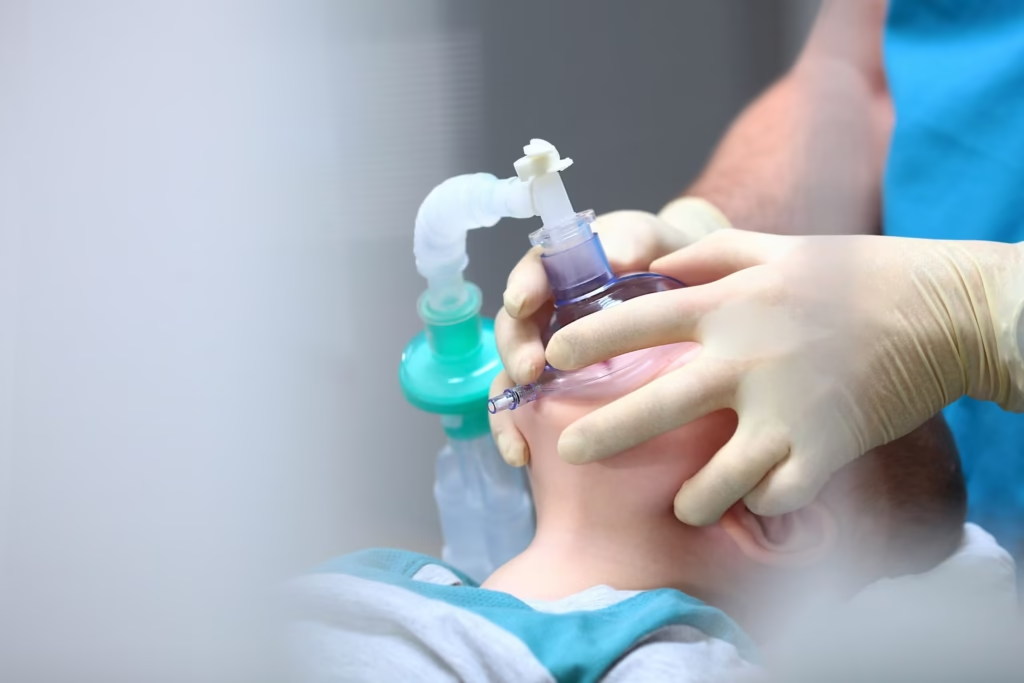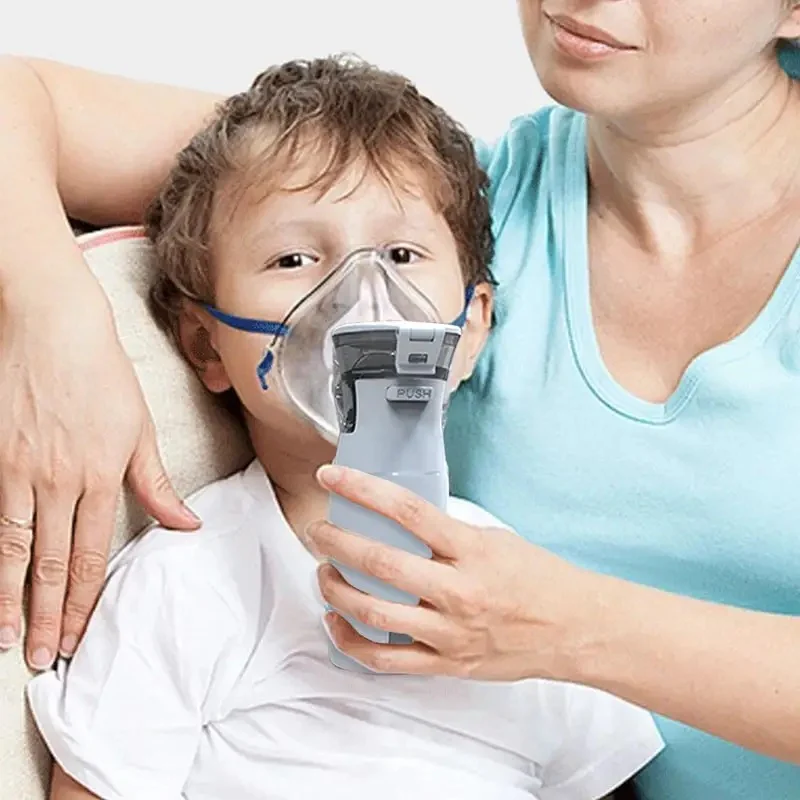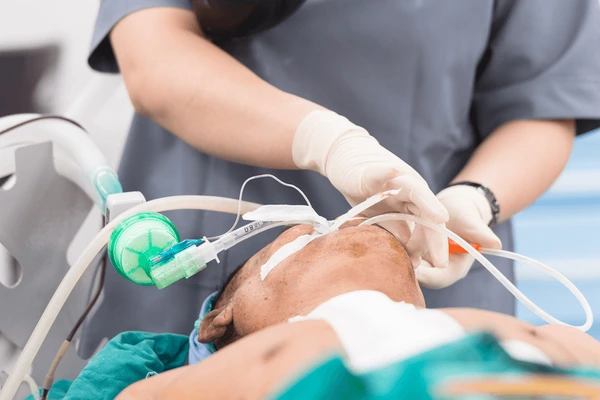
Home Respiratory & Tracheostomy Care
Experience expert Home Respiratory & Tracheostomy Care designed for safety and comfort in your own space. Our professional team ensures reliable airway management and breathing support at home.
24-hour service 7 days a week

Tracheostomy
A tracheostomy is a medical procedure where a small hole is created in the front of the neck to insert a tube into the windpipe (trachea). This helps a patient breathe when the normal airway is blocked or compromised.
The tube is called a Tracheostomy tube or trach tube. It can be temporary or permanent depending on the patient’s condition.
Tracheostomy Care at Home ensures safe, hygienic, and professional airway management in the comfort of your home. Expert nurses provide regular tube care, suctioning, and respiratory support to help patients breathe easier and live more confidently.
Medical Conditions Requiring Tracheostomy
→ Airway Obstruction: Blocked throat or voice box
→ Chronic Lung Diseases: Severe COPD, cystic fibrosis
→ Long-Term Ventilation: For patients requiring prolonged mechanical ventilation
→ Neurological Conditions: Stroke, ALS, or spinal injuries affecting breathing
→ Cancer or Surgery: Head, neck, or throat surgeries requiring airway support
How is a Tracheostomy Performed?
→ Step 1: Local or general anesthesia is administered.
→ Step 2: A small incision is made on the neck.
→ Step 3: A hole is created in the trachea.
→ Step 4: The tracheostomy tube is inserted.
→ Step 5: Tube is secured, and breathing support starts.
Main Services of Tracheostomy & Respiratory Assistance
Nebulization Therapy
Nebulisation is a medical process used to deliver liquid medication directly into the lungs in the form of a fine mist or aerosol. This is done using a device called a nebuliser, which converts liquid medicine into breathable vapour.
It’s commonly used for treating respiratory conditions such as asthma, chronic obstructive pulmonary disease (COPD), bronchitis, and lung infections. Nebulisation helps open up the airways, reduce inflammation, and ease breathing by delivering medication effectively and quickly where it’s needed most.


Airway Suctioning
Airway Suctioning is a medical procedure used to clear mucus, secretions, blood, or other fluids from a patient’s airway to help maintain clear breathing. It is especially important for individuals who cannot cough up secretions on their own due to conditions like tracheostomy, stroke, paralysis, or severe respiratory illness.
A sterile suction catheter connected to a machine or manual device is gently inserted into the airway through the mouth, nose, or tracheostomy tube. This helps prevent airway blockage, reduces the risk of infection, and ensures adequate oxygen flow, making it a critical part of respiratory care both in hospitals and at home.
Chest Physiotherapy (CPT)
Chest Physiotherapy (CPT) is a respiratory therapy technique used to help clear mucus and secretions from the lungs. It involves manual methods such as gentle clapping (percussion), vibration, and specific breathing exercises performed by a trained professional or caregiver.
CPT is especially beneficial for patients with conditions like chronic bronchitis, cystic fibrosis, pneumonia, or after surgery, where mucus build-up can obstruct airways. By loosening and moving secretions toward the larger airways, CPT makes it easier for patients to cough out or suction the mucus, improving breathing and reducing the risk of lung infections.


Other Services
Humidification Therapy
→ Using humidifiers to prevent dryness in airways, especially with oxygen
Ventilator Support
→ For patients dependent on mechanical ventilation
Speaking Valve Support
→ For patients using tracheostomy tubes who want to speak
Emergency Tracheostomy Tube Change
→ For accidental dislodgement or blockage
Pulse Oximetry Monitoring
→ Regular checking of oxygen saturation and heart rate
Patient & Caregiver Training
→ Teaching family members how to handle basic tracheostomy and respiratory care
Home Nursing Visits
→ Regular check-ups, assessment, and procedure support
Why Choose Medilife Clinic for Tracheostomy & Respiratory Care in Dubai
At Medilife Clinic, we prioritize patient comfort, safety, and quality of care. With a team of DHA-licensed nurses and respiratory therapists, we deliver professional at-home tracheostomy care and respiratory therapy across Dubai. Our services are designed to reduce hospital visits, promote faster recovery, and offer families peace of mind. From flexible care packages to 24/7 emergency support, Medilife Clinic ensures every patient receives personalized attention. Whether you live in Business Bay, Palm Jumeirah, Jumeirah, Downtown Dubai, or Emirates Hills, our team is always ready to assist. Trust Medilife for reliable, affordable, and compassionate home healthcare in Dubai.